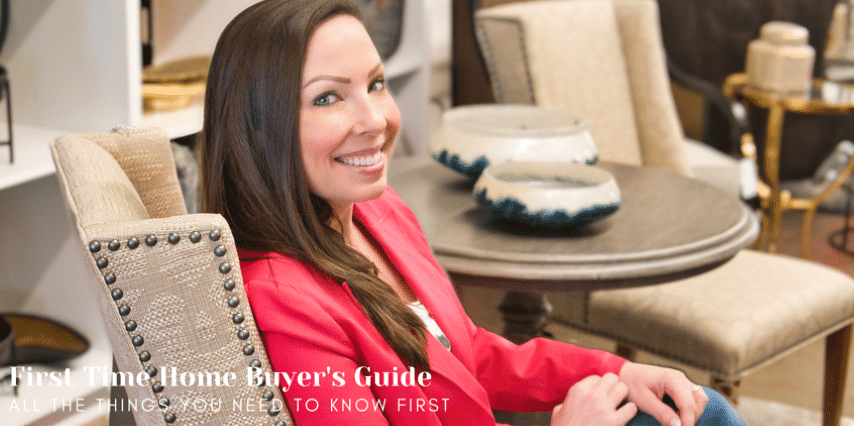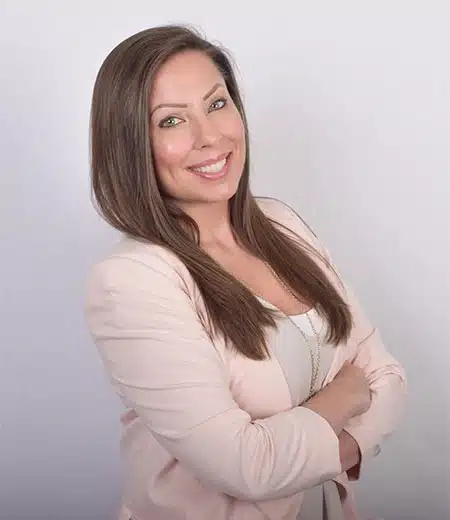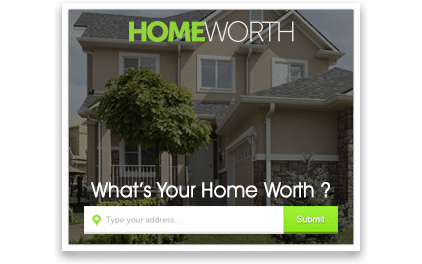
Buying a home for the first time can be exciting, nerve-racking, and overwhelming all at the same time! That is why I wanted to share a “First Time Home Buyer Guide” on my blog to help anyone who is new to real estate through the process. Before you begin saving, one very important question you should ask yourself – “is home ownership right for you?”. I’m sure you can appreciate that buying a home is one of the biggest decisions that you’ll ever make in your life.
Some follow up questions could include:
– what is important to you in a home?
– what is your financial situation currently like?
– are you ready to handle this kind of financial commitment?
– what is a true reflection of your financial and lifestyle needs?
Now depending on what your answer to some of these questions are, you may want to take a closer look at some of the pro’s and con’s between renting and buying. From the perspective of a first time home buyer guide, obviously I believe that the benefits of buying outweigh those of renting but it’s truly a personal decision and it really depends on your financial circumstances. Credit – New American Funding
On the side of renting, here are some pro’s:
– less maintenance and repairs
– potentially lower monthly costs and definitely lower upfront costs
– shorter term commitment although a year lease is typically the norm
– you are protected from any decrease in the value of the property impacting you
– you can free up cash to invest if you have some saved or you can continue to save for a down payment
On the negative side of renting, here are some of the con’s:
– monthly payments can and will likely increase year after year
– there is always the risk that your lease won’t be renewed and you may have to move
– you can’t remodel the property without the landlord’s permission and there may also be other restrictions
– at the end of the day, you’re paying off someone else’s mortgage not your own, so you’ll have no equity building up during the time that you live there.
A first-time home buyer guide will largely focus on the positive side of buying a home, but it doesn’t come without any potential negatives. Here are some pro’s for home buying:
– you can renovate or modify your property as you like (although permits could be required depending on the nature of the work)
– you are able to build up equity in a secure investment as property values rise and as you pay down your mortgage
– there is the chance you could earn money from your property if you have room to add a secondary suite such as a basement apartment
– there is some stability and peace of mind from being in control of your investment and knowing that you own the place that you live in.
Now lets take a look at some of the negatives that could be associated with home buying:
– there is the risk of financial loss if the market has gone down when you decide to sell. This may be especially true if you decide to move shortly after you’ve purchased
– you are solely responsible for ongoing costs including your mortgage, taxes, utilities, insurance and maintenance. It’s important to budget appropriately to consider all costs including those that may be unforeseen like a large repair
– monthly payments are not static and are subject to increase
One of the most important features of a home buyer’s guide is a BUDGET.
This may sound simple enough but it should be comprehensive to reflect all of your household expenses, not only those that go towards the home itself. Let’s break these up in to 4 cateogories
DEBT: car payments, credit cards, line of credit, mortgage(s) on any properties you already own, personal loans, student loans (if applicable)
HOUSEHOLD EXPENSES: childcare, clothes, gifts, groceries, home maintenance, tuition (if applicable) SAVINGS: charitable gifts, RRSP, savings accounts, TFSA
VARIABLE/ENTERTAINMENT: dining out, hobbies, magazines/books, special events, travel
Add up all of the expenses and subtract it from your monthly household income. The difference is what you can expect to have left at the end of every month. Make sure you’re as realistic as possible! For me, I have an elaborate spreadsheet that outlines all of my sources of income (I have several sources of passive income so I need to keep track in detail), then I have a section dedicated to household expenses such as childcare, utilities and taxes then another for personal expenses. This includes critical illness/disability insurance (since I’m self-employed) and groceries.
Since I’m self-employed, I pay for some expenses through my business. This includes automotive expenses like insurance/fuel, my cell phone etc. Anything left over at the end of each month goes into savings for my various investments.
Depending on how the numbers worked out for you when you calculated the income you have left after expenses are considered, there are a couple of affordability rules to also pay attention to.
The first affordability rule is that your housing costs should not be any more than 32% of your gross monthly (before tax) income. This is known as your gross debt to income ratio or gross debt service. To qualify for an insured mortgage, this can’t exceed 39%. This includes your monthly mortgage payment (both principal and interest), property taxes, utilities, 50% of condo fees and HOA fees and 100% of the site rent for leasehold tenure, should this apply.
Secondly, your monthly total debt load shouldn’t be more than 40 of your average gross (before-tax) monthly income. This is known as your total debt to income ratio and shouldn’t exceed 44%. This includes your housing costs, car loans/leases, credit card and/or line of credit payments and other mortgage payments. For your first time home buyer’s guide, if all of the above checks out, next you’ll want to move along to calculating some of your upfront costs. It’s not as simple as a down payment only!
The average ideally down payment is 20%. This doesn’t mean you can’t get a mortgage or buy a home with less, but you’ll be subject to a CMHC fee to insure the mortgage in the event of a default. Keep in mind that the lower the down payment, the higher your mortgage payments will be so the higher the down payment, the better.
Here are some upfront costs to consider:
– Downpayment: this makes up part of the home price when you make an offer to purchase (the deposit made with your offer will form part of this)
– Home Inspection and Appraisal Fees: the average home inspection is around $500. Appraisal fees could vary and depending on the circumstances your lender may cover the cost. It’s always good practice to check.
– Insurance: this could include property insurance as well as mortgage insurance. If you’re buying a condo, property insurance may be included in those fees
– Land Registration: this fee is based on a percentage of the purchase price of the property
– Pre-Paid Property Taxes and Utility Bills: if the seller paid their taxes for the entire year or utilities for part of a month, you may need to pay them back the difference once ownership is transferred
– Legal Fees: closing costs may vary but earmarking $2000 is good practice
– Potential Repairs and Renovations: it’s always nice to buy a turnkey property, but maybe you have to make some concessions about your needs/wants to find a home within your budget. This means you may need to allocate some money towards flooring, painting etc., to make the home what you want. This is of course, a cost you can spread out over time
– Moving Costs: at the least, this may be the cost of a money truck and pizza for friends but it could be movers if you don’t have support to help
– Furniture: if you’re a first time home buyer, you may need furniture for your new property. This can be costly so it’s not an expense you should overlook
– GST/HST: this isn’t commonly required but would be if you are buying a pre-construction property Your first time home buyer’s guide doesn’t end here! If all of the above points look like they are in order, next it’s time to start speaking to lenders.
Your options are typically the big banks or a private mortgage broker. They will need to take a look at a number of key documents like:
– government issued identification,
– proof of your current address and address history,
– 2-3 years of tax returns and notice of assessments,
– proof of employment and/or income, – proof of down payment as well as savings/investments
– any debt you have
– credit check to determine your credit score.
If you’re carrying any debt on a line of credit or credit card, chances are you’ll need to pay this before you get approved or before the home will be able to close. They may suggest you lower your price range for a home or even take a couple more years to save for a bigger down payment. Should they think you’re in good shape however, it’s a very good idea to get pre-approved. This will help you to know what budget range you can consider when you start looking at homes.
The biggest question most people have about mortgages are the rates and the terms. Although most people feel more comfortable with a fixed rate mortgage, this doesn’t necessarily mean you’ll pay less in the long run. It’s a good idea to keep an open mind.
Here are some mortgage terms you should really know at this stage in the game:
AMORTIZATION: this is the length of time that you agree to pay off the mortgage. 25 years tends to be very common as it spreads out your payments over a longer period of time and also keeps monthly payments more manageable.
MORTGAGE TERM: this is the length of time that the terms and rate will remain in effect. Sometimes this could be as little as 6 months to 3, 5 or even 10 years.
PAYMENT SCHEDULE: this reflects how often you’ll make your payments. You don’t only need to make one payment a month. In fact, bi-weekly or bi-weekly accelerated will help you pay down the mortgage a little bit faster.
Next, let’s take a look at the kind of interest rates you will need to choose between:
FIXED: this means that your rate won’t change during the term of the mortgage
VARIABLE: your interest rate will fluctuate with the mortgage. This doesn’t mean that your actual payment will fluctuate, just the amount that goes towards the principal vs. the interest.
PROTECTED (Capped) VARIABLE: rates can fluctuate but won’t rise over a preset maximum rate
If all of this is clear, let’s next review the differences between open and closed mortgages –
OPEN: this means that you can pay your mortgage off in part or in full at any time without any costly penalties
CLOSED: this option will give you a limit on paying your mortgage off in part or full – but it tends to come with a lower interest rate What about conventional vs. high ratio mortgages?
CONVENTIONAL: this type of mortgage requires 20% down payment or more so your loan will be 80% or less of the purchase price.
HIGH RATIO: this is the opposite of the above. This type of mortgage means you have less than 20% down and will be mortgaging 80% of the purchase price or more.
A few other helpful things to note:
– prepayment options are important as it will help you to make extra payments, when you can afford to, in order to pay the mortgage down more quickly with no penalties
– portability is an option to let you transfer or switch the mortgage to another home with little or no consequences
– stress test is something you’ll need to “pass” in order to qualify for a mortgage with federally regulated lenders and credit unions. If and when you’ve got your mortgage pre-approval in hand, next comes the fun part
– house hunting!
And naturally, this is where I come in
As a licensed REALTOR®, I will help you not only find a great home for you but guide you throughout the process so it’s as seamless and as stress free as possible. To get started with this leg of the journey, you’ll want to consider where you want to live, the size of the home you’re looking for, any special features as well as the lifestyle you’re looking for – all within the budget that you’ve been pre-approved for.
Remember! The home you choose today will have a huge impact on your lifestyle and your finances for years to come. Where you choose to live will determine HOW you live so choose wisely.
Now, you may or may not know this but not all homes are the same. The most common types are freehold (meaning you own the building and the land), condominium or strata (you own the unit but share ownership of common areas), leasehold (you own the building or unit but lease the land it sits on) and co-operatives (you buy a share in the entire building and are assigned a unit to live in).
Your first time home buyer’s guide can almost be considered in two sections – before getting pre-approved and starting your search and after. In this half of the process, along with your REALTOR®, there are other professionals you’re going to require support from.
They will include:
– a property appraiser (usually supplied by your lender)
– a property inspector (to evaluate the property)
– contractor (should there be any required repairs or if you’re building a property)
– insurance broker
– land surveyor (may or may not be needed, more likely on larger properties and farms)
– lawyer or notary (to handle the closing of the property)
Once you’ve found a property you’re happy with, it’s time to make an offer and close the deal! In some cases, a property seller will host an offer night to review offers from all interested buyers.
Otherwise, they may accept offers any time. As a buyer, the latter is usually a little easier to work with as you’re not actively competing with other offers. Your REALTOR® will prepare an agreement of purchase and sale for you. This will include some of the basics like name of the buyer (you) as well as the seller, the property address, offer price, amount of your deposit (typically 5% or more), the desired closing date, an expiry date and any conditions like home inspection, financing and more.
It’s VERY important to pay close attention to any dates. If you miss any dates and allow a condition to lapse unfulfilled, then your deal will become null and void. If you need more time, you will need to request an amendment to the agreement of purchase and sale to obtain an extension.
Pretty much anything related to the purchase and sale of property must be communicated and signed off in writing to be valid. Once all of the conditions have been fulfilled, then your offer is considered to be firm. As the closing date approaches, you’ll have some time to get other things in order like updating your address, pack etc.,
Please keep in mind that now is NOT the time to go out and rack up a bunch of debt buying furniture or a new car. Doing so could compromise your ability to close the property and secure the mortgage financing you’re depending on. Ideally, the property will close as planned.
Once you’re moved in, a few other things to keep in mind:
Make your payments on time! This is especially important for your mortgage and insurance. Failure to do so can have big implications on your credit and ability to keep your home.
Plan ahead – You’ll have lots of ongoing costs. One thing that I find helpful is scheduling payments as soon as a bill comes in. This way you don’t have to worry about forgetting about it. I also save a pdf of the payment as proof for my own records.
Budget – set a realistic budget and live within it! If you find you’re spending more than you’re earning, then you may need to find new ways to earn more or spend less.
Save for a Rainy Day – nobody like to find themselves with their back up against a wall. Your home could require some major repairs over time so it’s a good idea to have access to credit you don’t touch OR put aside 3-5% of your income for emergency purposes.
And, speaking of emergencies – as part of your first time home buyer’s guide, here are some extra tips. Keep your home safe and be prepared for emergencies BEFORE they happen. Some of these points can include: – make sure you have an adequate number of smoke detectors and carbon monoxide detectors installed.
It’s good practice to change the batteries every spring and fall (at my house, we like to change these when clocks go ahead or back)
– test your home a few times a year for harmful radon gas emissions. You can learn more about this at Canada.ca/radon
– keep a fire extinguisher in an easily accessible location. We keep ours in our kitchen. – invest in a fire proof safe to protect important documents like birth certificates, your passport, certificates and valuables – always dispose of dangerous materials safely – prepare an evacuation plan if there is ever a fire
As I’ve said above, buying a home can be very exciting but it can also be a little nerve racking and overwhelming. I hope that this first time home buyer’s guide will give you some additional knowledge about the process and steps involved so you can be properly prepared for this big and important step in your life. ?
Of course, if there is ANYTHING else I can do to help, don’t hesitate to connect with me directly. I can be reached at info@serenaholmesrealtor.com or 647.896.6584. Thanks for taking the time to read and happy house hunting!
For plenty of other great tips, make sure we’re connected on social and you’ve subscribed to my YouTube channel.










